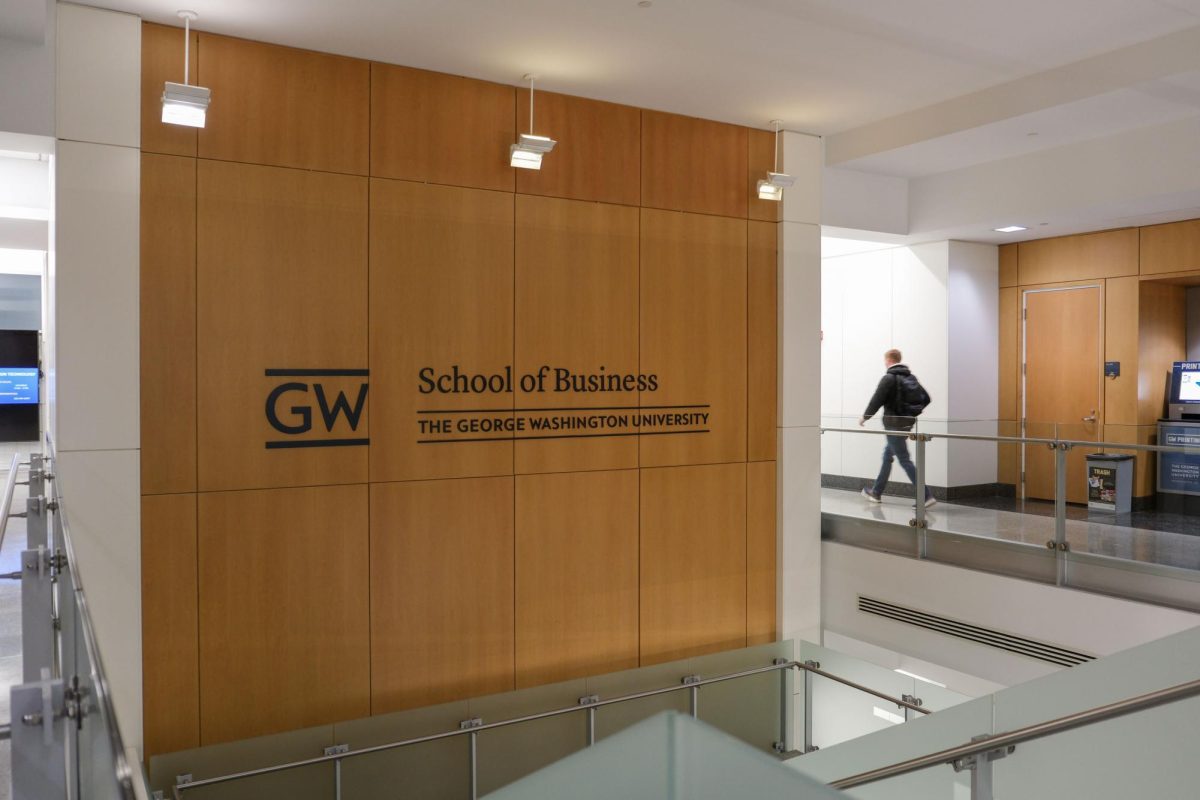J.B. Checkley saunters through his high school hallway, unaffected by the high-spirited chatter of classmates, sporting spiked hair, glittered clothing and curiously sincere smiles.
This scene of aspiring artists at the Ellington School of the Arts is normal for students like Checkley, who travel from all over the D.C. area to participate in a unique learning experience in the public school system.
“The academics could be better, but the art classes are really good,” Checkley said.
Administrators have entered a partnership with GW designed to address that concern – improving the academics at a school focused on the arts.
GW and the Ellington Fund, which promotes the Ellington School and initiated partnership talks last spring, are in the final stages of signing an agreement that will give GW partial control of the Ellington School’s future.
This deal will rekindle a relationship that started in the 1960s, when GW created the school as a “sponsored research” project for GW students, Ellington School co-founder Peggy Cooper Cafritz said.
Three GW administrators will sit alongside representatives from the Kennedy Center, the Ellington School and the Ellington Fund to manage the historic high school.
Rhoda Sischer, special assistant to GW President Stephen Joel Trachtenberg, said GW is acting as a “responsible neighbor” to help the Ellington School gain more independence from the D.C. public school system without becoming an individually chartered school.
Sischer said while GW and the Kennedy Center are partners with the Ellington School, they are merely “sources of opportunity” and will not contribute to the school’s funding.
Cafritz said a detailed proposal by the Ellington Fund to make the Ellington School an independently chartered school alarmed D.C. public school officials and members of the D.C. community.
Last year representatives from the Ellington Fund met with Trachtenberg, Rep. Eleanor Holmes-Norton (D-D.C.), the superintendent of schools and members from the Kennedy Center to come up with a plan that would provide the Ellington School with the independence it wanted while keeping it within the D.C. public school system.
“It was like a coming home for us,” said Cafritz, who added she hopes to create strong ties between the high school and GW in a variety of areas.
Future talks could lead to jointly hired teaching staffs, graduate teaching programs allowing GW students to teach at the high school and cooperation between the schools’ art programs, Cafritz said.
GW’s work with the Ellington School’s media/literary department and library are precursors to future relations between the two institutions.
Professor Nina Seavey, director of the GW Center for History in the Media, went to the Ellington School to do a “top to bottom evaluation” of the school’s literary/media department and wrote a proposal for funding.
“I was asked to evaluate and figure out ways in which the program could be improved,” Seavey said.
The Ellington Fund will submit Seavey’s proposal for a sound and video production studio, which will provide students with “a mini-Kennedy Center,” said Professor David Arranson of the Ellington School’s literary/media department.
Seavey said her work with the media/literary department is indicative of the project’s future.
“It’s exactly the type of relationship they want to foster,” she said.
Jack Siggins, University librarian at GW’s Gelman Library, said he will work with the Ellington School’s library in a similar fashion.
Siggins said he will meet with an Ellington School librarian in two weeks to review the library’s textbook, budget and staffing needs.
Though Siggins said he would not draft a proposal for the school, he said he will offer advice about improving presentations and proposals.
Siggins said GW will be a great resource for academic improvement because the high school is “very strong on the performance side of curriculum and weak in the instruction side.”
While GW, the Kennedy Center and the Ellington Fund are waiting for the D.C. public school system approval to finalize agreements, the parties are moving in the right direction to save “one of the few gems the school system has,” Cafritz said.






